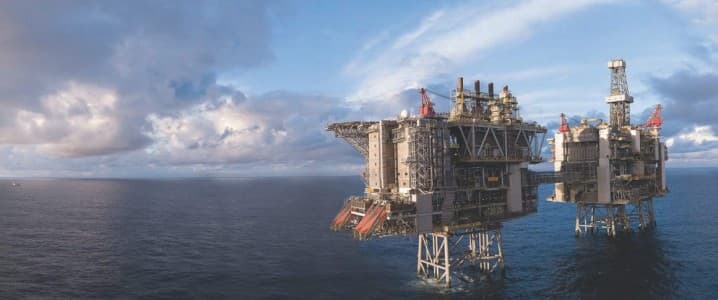There seems to be a point of saturation when it comes to assessing Angola’s crude exports for the upcoming months – beyond a certain point it serves as no surprise that the forthcoming month is going to set another multi-year low. Yes, Angola did voluntarily commit to capping its oil production and yes, the future seems to be brighter than the present state – all the more so as many of President Lourenço’s endeavors to render Angola’s upstream sector more business-friendly and streamline Sonangol’s business structure will inevitably bear fruit in the longer term.
As dire as today’s exports might seem to be, Luanda can harbor genuine aspirations for the country’s offshore ultra-deepwater, the linchpin of its future crude production growth. This year will mark the fifth consecutive year that Angola’s production decreases, in the past 5 years it has slid by an average of some 7% annually. Crude output averaged 1.376mbpd last year and provided December brings about no sudden supply disruption it will average 1.285mbpd, almost half a million barrels per day lower than in 2016.
Considering the minimal utilization of own crude within Angola, its January-December exports are roughly on par with its production, at 1.27mbpd (see Graph 1) with a heavily rate of decline towards the second half of the year. What is puzzling is that this month (i.e. December 2020) but also in the first quarter of 2021 Angola will produce palpably less crude than its OPEC+ commitments allow, pointing to a structural divergence between the African nation’s possibilities and its self-perception.
Graph 1. Angolan Crude Exports in 2017-2020 (in million barrels per day).

According to preliminary loading schedules January 2021 will see exports around 1.18mbpd and February 2021 will dive even deeper than that, to 1.1mbpd. Although there is still some chance that additional cargoes will be added into the February schedule, the odds are that it will become the weakest month in terms of exports in more than 3 years.
The dearth of Angolan crude in general did not automatically translate into the appreciation of local grades, as can be seen from Graph 2 Angola suffered a tremendous lot during the apex of the first wave in April-May 2020 when all of its flagship grades dropped to at least -6 USD per barrel against Dated Brent but eventually managed to recover from the slump (largely buttressed by the revival of Chinese demand) by July-August. Despite some fluctuation in the autumn months, Angola has avoided any serious slump in global demand for its crudes.
Graph 2. Differentials of Angolan Grades vs forward Dated Brent in 2017-2020 (USD per barrel).

Indubitably, the COVID-19 pandemic is to blame for many of Angola’s 2020 shortcomings. For instance, several final investment decisions were expected for this year, but none came to fruition in the end. Second, the market slump triggered by the pandemic has also compelled Luanda to participate in the OPEC+ production curtailment coalition, capping its output at 1.27mbpd.
Third, the long-mooted Onshore Licensing Round within the Lower Congo and Kwanza Basins had to be pushed back into 2021 as only few would earnestly accept such commitments in these uncertain times. Fourth, the physical safety of oilmen required that drilling operations be suspended whenever possible, even in cases where the prospective resources to be found are mouth-watering (as with Total’s Block 48).
On the other hand, the relative lull in terms of news coming from Angola conceals quite a flurry of negotiating activity over the terms and conditions of risk service contracts with Western majors on multiple ultra-deepwater blocks. It is rumored that BP and ENI are closing in on their respective deals concerning Block 18/15 and Blocks 46 and 47, respectively.
ENI’s interest in two blocks that are both disputed by Congo (Block 46 is almost fully within the maritime line that Brazzaville claims) is noteworthy, attesting to the Italian company’s willingness to build on its recent discoveries in Angola (and also potentially pointing to some tacit progress on the issue between the two governments). Exploration drilling is also coming back next year – Total is preparing to spud its Ondjaba-1 well in Block 48 and ENI is moving the Sonangol Libongos drillship back to Block 15/06, seemingly with the intention to build on the success of the Agogo field.
The equivocal yet still rather optimistic stance of oil majors active in Angola to the happenings of 2020 can be seen, among many others, in ExxonMobil’s foot-dragging on its acreage in the Namibe Basin. Namibe’s resources are largely untested, although given its erstwhile continuity with Brazil’s oil-abundant Santos Basin it has been long speculated that it should be equally productive.
It took Exxon and the Angolan government more than 2 years to settle on the terms of their risk service agreement on Blocks 30, 44 and 45 – the first ultra-deepwater RSA in Angola, pioneering the way for BP and ENI as was already stated above. Considering that Africa generally takes a couple of years more to bring fields to production, oil majors are seemingly betting on kickstarting ultra-deepwater Angola in the late 2020s.
Running somewhat contrary to the general line of easing business for investors, the Angolan government has strengthened the local content rules by means of a Presidential decree issued October 20, with the aim of increasing domestic companies’ exposure to the spectrum of oil services.
Now Angola will have 3 tiers of bidding forms to provide for upstream projects – exclusive (only Angolan companies can apply), preferential (Angolan companies should be given preference other things equal) and competitive (foreign companies are treated equally). The National Oil and Gas Agency (ANPG) will maintain a database of goods and services that would need to be treated on an exclusive and preferential, therefore national authorities can react quite swiftly should domestic service providers be deemed inadequate.








